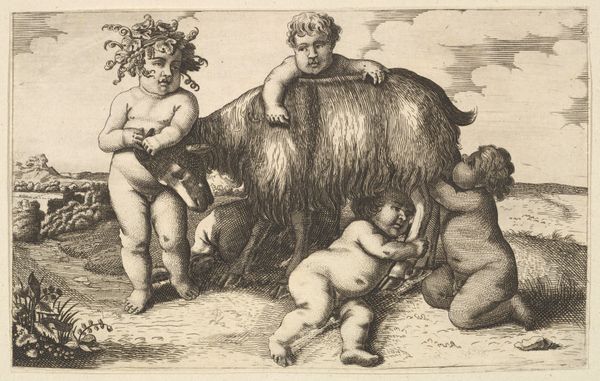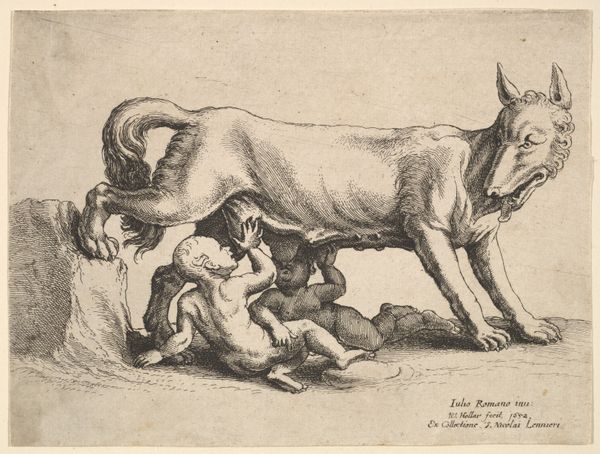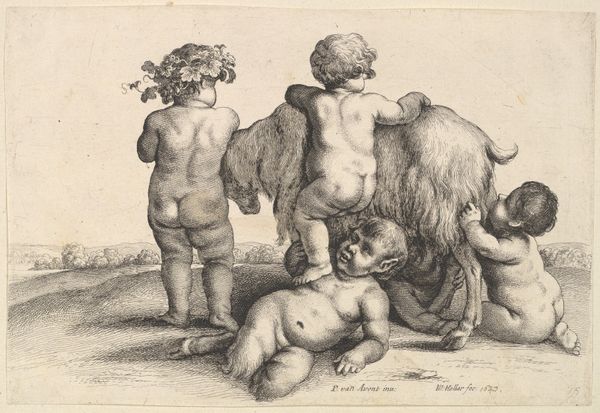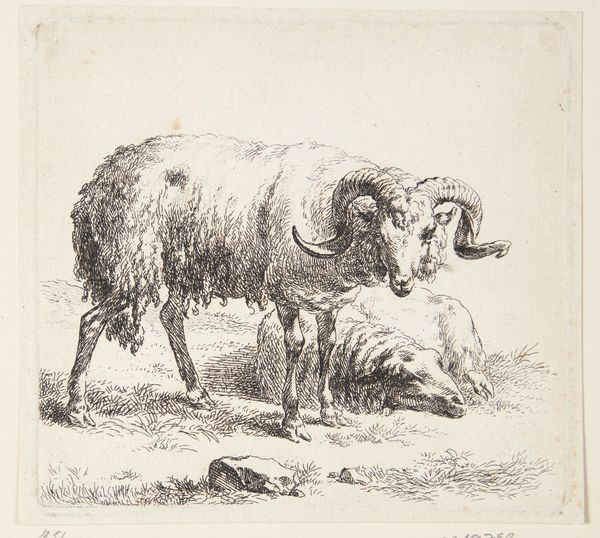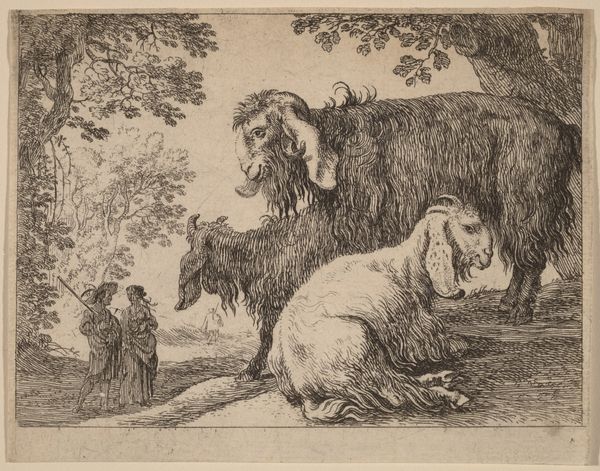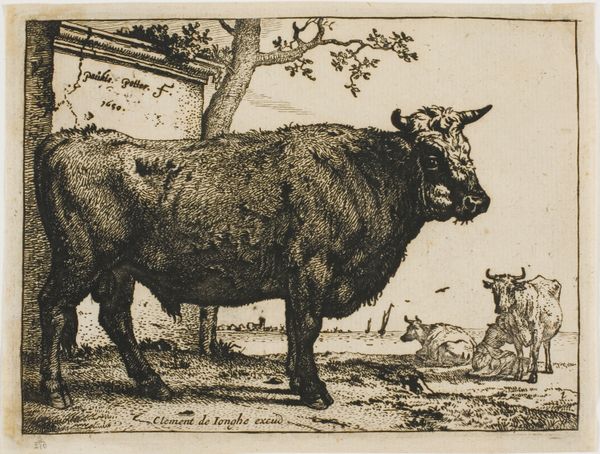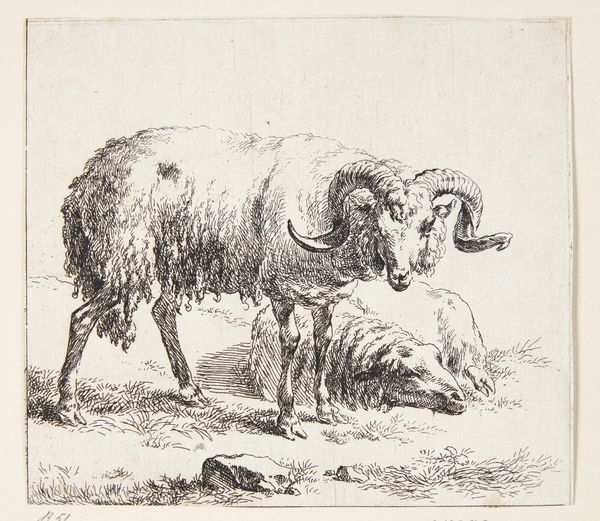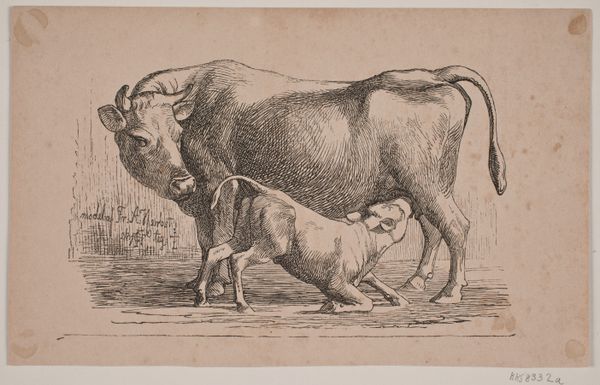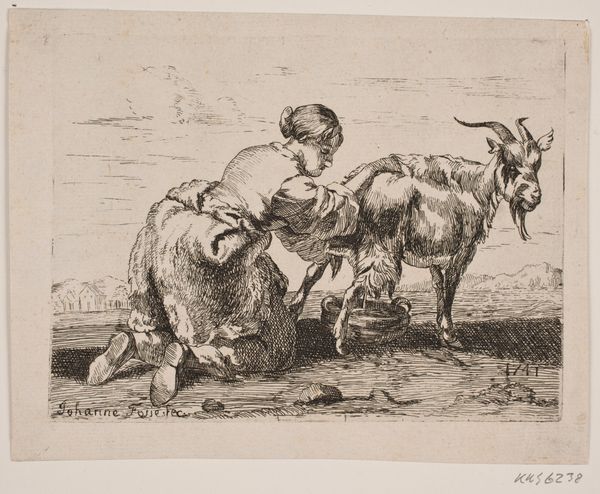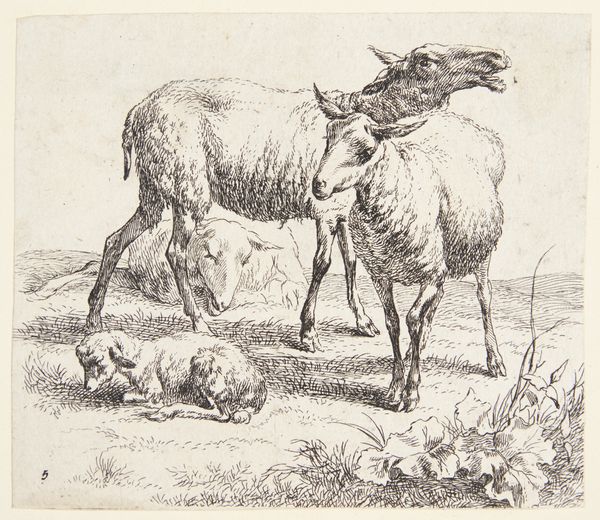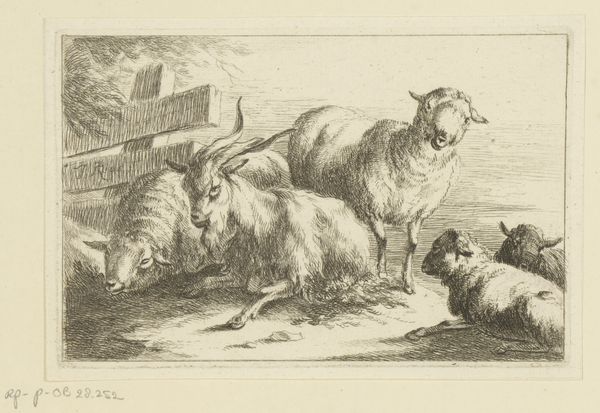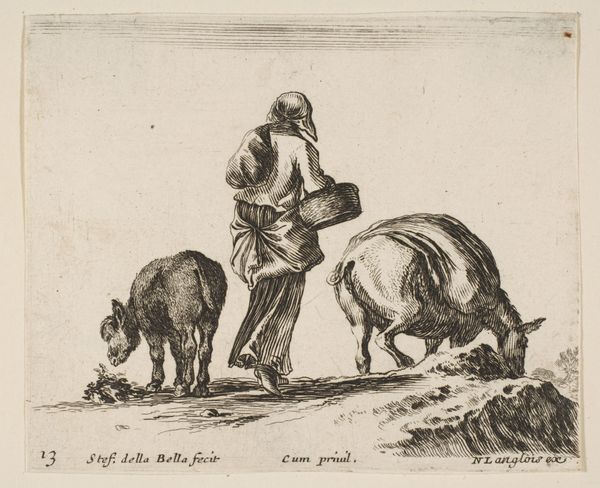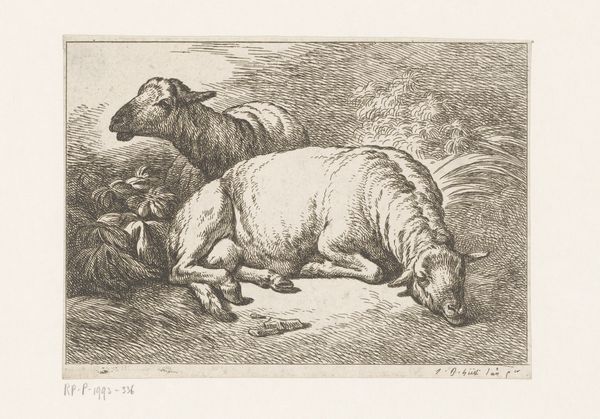
drawing, print, etching
#
drawing
#
baroque
# print
#
etching
#
figuration
#
history-painting
#
academic-art
#
nude
Dimensions: Plate: 5 1/2 × 8 3/16 in. (13.9 × 20.8 cm)
Copyright: Public Domain
Wenceslaus Hollar made this etching, "Four boys, a young satyr, and a goat," in 1647. It shows a scene of children and animals in an open landscape, evoking a sense of pastoral innocence. Hollar was working in a period marked by significant social and political upheaval, including the Thirty Years' War. This interest in classical themes offered a retreat from the harsh realities of 17th-century Europe. The image is likely to draw from classical mythology and the idyllic vision of Arcadia that was much in vogue among members of the elite. The presence of a satyr alludes to themes of nature and fertility. The goat, often a symbol of abundance, further enriches this theme. Hollar himself was employed by aristocratic patrons, so this imagery would appeal to a wealthy class seeking refinement. Historical analysis can help us understand the social values and artistic conventions of Hollar’s time. By researching the printmaking practices and classical sources that Hollar drew upon, we can better appreciate the complex meanings embedded in this seemingly simple scene.
Comments
No comments
Be the first to comment and join the conversation on the ultimate creative platform.
